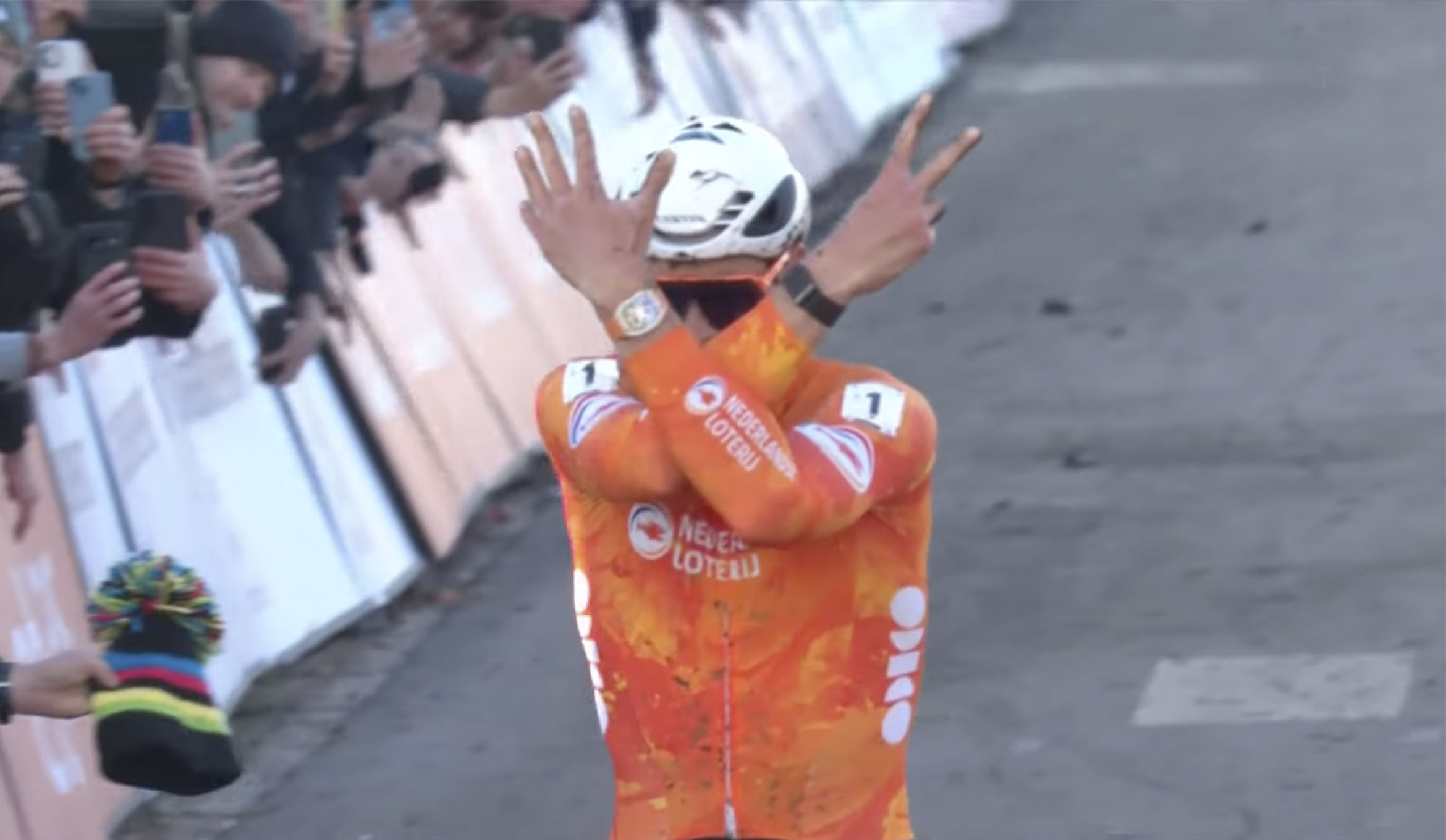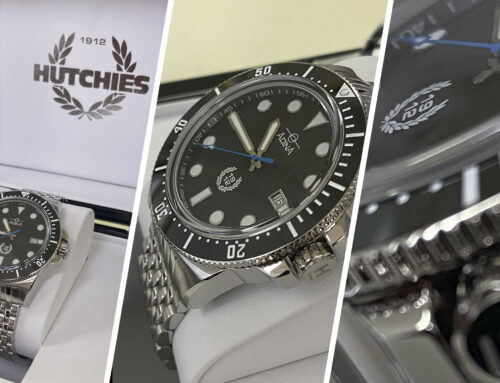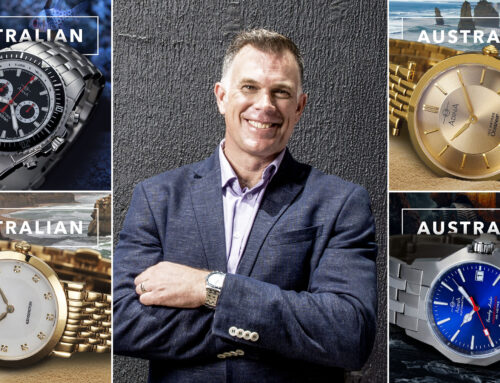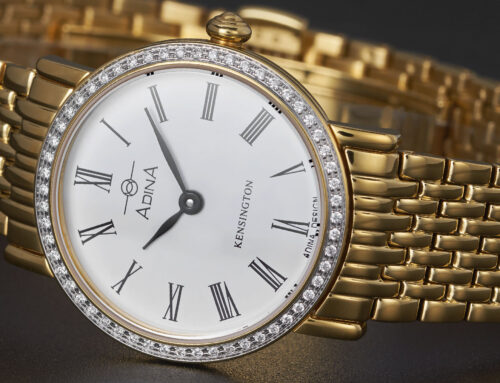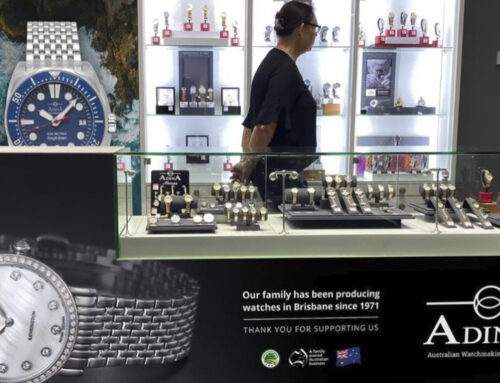Timeless vs. Tech is the question. As the General Manager of Adina Watches, a multi-award-winning Australian family business that has been crafting premium wristwatches since 1971, I often find myself reflecting on the ever-evolving world of timepieces. The first Adina watch was built by my father, Bob Menzies, on the principles of precision, craftsmanship, and an unwavering commitment to quality. Over the decades, our industry has witnessed incredible transformations—from the rise of quartz to the advent of smartwatches—but there is something remarkable about the enduring allure of traditional mechanical watches.
Recent events in the sporting world have brought this dynamic into sharp focus. Dutch cycling phenomenon Mathieu Van der Poel clinched his seventh Elite Men’s Cyclocross World Title in spectacular fashion, and as someone who appreciates the finer details, I couldn’t help but notice his choice of wristwear. Van der Poel competed wearing a luxury mechanical sports watch valued at over half a million Australian dollars. On the other hand (quite literally), his archrival, Belgian sensation Wout Van Aert, sported a traditional smartwatch during the gruelling event. In a twist of irony, Van Aert’s smartwatch was lost somewhere on the brutal course, leaving him empty-wristed as he crossed the finish line in second place.
Is the Future of Smartwatches about to Deteriorate?
This begs the question: Are we witnessing the beginning of the end for smartwatches? While that may sound like a bold statement, there is an undeniable shift happening in how elite athletes and consumers at large view wristwear.
Let’s take a closer look at the juxtaposition of Van der Poel and Van Aert. Van der Poel’s luxury mechanical watch was clearly a statement piece. It symbolized craftsmanship, tradition, and prestige—qualities that resonate deeply with those who appreciate timeless design. Yet, in a nod to modernity, he also wore a discreet fitness tracker on his opposite wrist to gather the critical performance data required at such an elite level. Van der Poel managed to marry the old with the new, showcasing how these two worlds can coexist harmoniously and in no small way showcase the brand he was wearing in a product placement master class!
On the other hand, Van Aert’s reliance on a smartwatch was a clear acknowledgment of the role wearable technology plays in contemporary sports. These devices provide a wealth of real-time data, from heart rate to power output, that is invaluable for elite athletes. But losing his smartwatch mid-race highlighted a potential vulnerability of such devices. They are, after all, tools designed for utility rather than enduring symbols of personal expression.
A Resurgence of Traditional Timepieces
So, where does this leave us? Again Timeless vs. Tech is the question. As wearables become more discreet and technology continues to advance, could we see a resurgence of traditional timepieces on elite athletes’ wrists during competition? I believe the answer lies in the balance between form and function.
At Adina Watches, we’ve always believed that a wristwatch is more than just a tool to tell time. It is a reflection of who you are, a piece of art you carry with you, and a testament to the values you hold dear. While smartwatches have undoubtedly carved out their niche, offering unparalleled convenience and data-driven insights, they lack the soul and heritage that a mechanical watch embodies.
What’s fascinating about Van der Poel’s choice is that it signals a growing appreciation for this heritage. Even in the hyper-competitive and data-driven world of elite sports, there’s room for tradition. This shift is not limited to cycling; we have seen tennis players, golfers, and even Formula 1 drivers sporting luxury mechanical watches, often as an extension of their personality and style.
The evolution of wearables further supports this trend. As technology becomes more integrated and less obtrusive, athletes no longer need to rely solely on a smartwatch to capture essential data. Fitness trackers and sensors are becoming smaller, lighter, and easier to conceal, paving the way for a return to traditional wristwear that prioritises aesthetics and craftsmanship.
This certainly does not mean smartwatches are going away anytime soon. They will continue to be a dominant force, particularly for those who prioritise convenience and connectivity. But it does suggest that there is a growing space for both types of timepieces to coexist. Traditional mechanical watches, with their timeless appeal, may well reclaim their place as the preferred choice for those who value individuality and legacy—even in arenas as demanding as elite sports.
Adina Mechanical and Quartz Timepieces
At Adina Watches, we have always strived to bridge this gap. Our mechanical and quartz timepieces are designed with the modern Australian lifestyle in mind, combining robust functionality with elegant design. Whether it’s a rugged diver’s watch or a classic dress piece, our goal is to create watches that resonate with the values of craftsmanship and authenticity while meeting the needs of contemporary wearers.
As I watched Van der Poel celebrate his incredible victory, I couldn’t help but feel inspired. His choice of wrist wear was more than just a personal preference; it was a statement about the enduring value of tradition in a rapidly changing world. And as a second-generation custodian of Adina Watches, it reaffirmed my belief in the timeless appeal of a beautifully crafted timepiece.
So, is this the beginning of the end for smartwatches? Probably not. But it might just be the start of a new chapter—one where tradition and technology coexist, and where the beauty of a mechanical watch can once again shine on the wrists of champions. After all, only time will tell.

